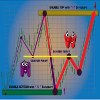- Accueil
- Communauté
- Programmation
- Question about SELECT_BY_POS
Advertisement
Edit Your Comment
Question about SELECT_BY_POS

forex_trader_211931
Membre depuis Oct 14, 2014
posts 11
Mar 19, 2015 at 13:38
Membre depuis Oct 14, 2014
posts 11
Hey guys,
This may be a very silly question, but suppose I have 4 trades open, they will have Position 0, 1, 2 and 3 on the MODE_TRADES pool..
Now, if I close the order that's assigned to position 2, will I be left with positions 0, 1 and 3, or will the order in position 3 be reassigned to position 2?
This may be a very silly question, but suppose I have 4 trades open, they will have Position 0, 1, 2 and 3 on the MODE_TRADES pool..
Now, if I close the order that's assigned to position 2, will I be left with positions 0, 1 and 3, or will the order in position 3 be reassigned to position 2?
Membre depuis Nov 21, 2011
posts 1601
Mar 19, 2015 at 18:05
Membre depuis Nov 21, 2011
posts 1601
Renko posted:
Hey guys,
This may be a very silly question, but suppose I have 4 trades open, they will have Position 0, 1, 2 and 3 on the MODE_TRADES pool..
Now, if I close the order that's assigned to position 2, will the order in position 3 be reassigned to position 2?
Yes I guess so.
Simply do a test by closing 2, then check if it closes 2 positions.

forex_trader_25447
Membre depuis Dec 21, 2010
posts 127
Mar 20, 2015 at 09:52
(édité Mar 20, 2015 at 10:17)
Membre depuis Dec 21, 2010
posts 127
Any pool, at any time, have indexes form 0 to MAX-1 !
... where MAX can be : OrdersHistoryTotal() or OrdersTotal() .
Any trade operation change both pools (list of orders) immediately.
WARNING : Before new OrderSelect() , you still have old data selected (loaded in memory) !!!
So, If you have 4 active position ( list index =0,1,2,3 ),
and close position ( index=2 ),
the result is :
-> Total position = 3
-> possible List index = 0,1,2
So here is a test :
- if you have 4 positions, and close position=2, try :
--> OrderSelect(3,SELECT_BY_POS,=MODE_TRADES ); ==> return ERROR
--> OrderSelect(2,SELECT_BY_POS,=MODE_TRADES ); ==> return current position=2, previous=3
... where MAX can be : OrdersHistoryTotal() or OrdersTotal() .
Any trade operation change both pools (list of orders) immediately.
WARNING : Before new OrderSelect() , you still have old data selected (loaded in memory) !!!
So, If you have 4 active position ( list index =0,1,2,3 ),
and close position ( index=2 ),
the result is :
-> Total position = 3
-> possible List index = 0,1,2
So here is a test :
- if you have 4 positions, and close position=2, try :
--> OrderSelect(3,SELECT_BY_POS,=MODE_TRADES ); ==> return ERROR
--> OrderSelect(2,SELECT_BY_POS,=MODE_TRADES ); ==> return current position=2, previous=3
Mar 29, 2015 at 04:32
(édité Mar 29, 2015 at 05:01)
Membre depuis Sep 20, 2014
posts 342
I quite frankly don't know why you would do something like that.
If you use a loop, as in:
for (i= 0 ;i< OrdersTotal(),i++){
OrderSelect(i,SELECT_BY_POS,=MODE_TRADES );"
if (whatever is true){
close or whatever;
break;
}
}
Have your parameters for closing as if statements, you just go through the list regardless of where the position is, and close when you get to the trade you want to close, then break out of the loop.
Another method would be to store the trade number you want to close and then go through the list with the method above till your trade numbers match. Both are much better ways of doing it than trying to work out where the trades positions is in a list.
Yet another method is to comment your trade when you open it, then use the method above to go through the list and look for the comment.
If you use a loop, as in:
for (i= 0 ;i< OrdersTotal(),i++){
OrderSelect(i,SELECT_BY_POS,=MODE_TRADES );"
if (whatever is true){
close or whatever;
break;
}
}
Have your parameters for closing as if statements, you just go through the list regardless of where the position is, and close when you get to the trade you want to close, then break out of the loop.
Another method would be to store the trade number you want to close and then go through the list with the method above till your trade numbers match. Both are much better ways of doing it than trying to work out where the trades positions is in a list.
Yet another method is to comment your trade when you open it, then use the method above to go through the list and look for the comment.

*Lutilisation commerciale et le spam ne seront pas tolérés et peuvent entraîner la fermeture du compte.
Conseil : Poster une image/une url YouTube sera automatiquement intégrée dans votre message!
Conseil : Tapez le signe @ pour compléter automatiquement un nom dutilisateur participant à cette discussion.












